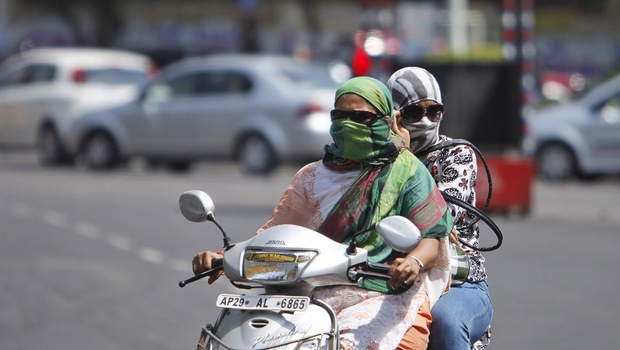As summer approaches, a lot of people are looking forward for summer vacation with fun and joy. Many people would plan to go out on beaches and resorts. Summer season along with sun rays and heat also heralds the arrival of sweat, dehydration with tiredness, sunburns, tanning and myriad skin problems.
To combat these problems early on, one must know the skin diseases occurring in summer and preventive measures to be taken for the same. A little extra time and attention for skin care, goes a long way to ensure full enjoyment of summer season.
Here we will discuss various skin problems occurring in summer and some general measures to avoid them.
Skin problems in summer season can occur mainly due to three reasons-
- Diseases due to excessive sweating and dehydration- e.g. prickly heat, heat boils or fungal infections etc
- Diseases due to sunlight damage- e.g. sunburn, suntan, sunlight allergies.
- Diseases exaggerated by sunlight and/or sweating- melasma, photomelanosis, trunkal acne, eczema etc
Prickly heat or miliaria is a skin disease marked by small itchy red rashes. It is especially common in children and infants due to less water intake, playing in hot environment and due to their underdeveloped sweat glands. It is caused by occlusion of sweat gland duct. Depending on level of obstruction one may get different types of miliaria e.g. miliaria rubra, crystalina, pustulosa etc.
Avoiding activities that induce sweating, using air conditioning to cool the environment, wearing light clothing and in general, avoiding hot and humid weather would help to prevent miliaria. Calamine lotion can be applied for relief from itching.
Heat boils or folliculitis – Folliculitis is inflammation of one or more hair follicles. It can occur anywhere on the skin except palms and soles. it is characterized by painful red bump with a pus pointing on it. Associated malaise, fever and weakness may be present. Folliculitis starts when hair follicles are damaged by friction, blockage of the follicle or shaving. In most cases of folliculitis, the damaged follicles are then infected with the bacteria most commonly Staphylococcus aureus. Hot, moist compresses may promote drainage of the affected follicles. Topical mupirocin cream may be applied for treatment. If it persists then consult your doctor.
Periporitis – Due to high humidity and secondary infection of miliaria especially in infants and children sweat gland abscess may be seen in summer season. It is characterized by multiple painful red boils mostly on face and neck. Good water intake with topical antibiotics may help to get relief. If severe then oral antibiotics may be needed.
Fungal infections-
Dermatophyte infections (ring worm) – Various types of dermatophytes (fungi) can cause itchy red to black colored ring shaped lesions on body due to excessive moisture, specially on groins and other skin folds. It is characterized by round itchy patches with raised border. Maintaining good hygiene and regular use of antifungal powder can help to prevent it. Topical plain antifungal cream can be used for treatment. For severe infections oral medicines may be needed. Athlete’s feet is one of the common fungal infection especially in summer. It occurs more commonly in people wearing shoes for long time. One can get itchy white colored lesions in between web spaces of toes with or without involvement of other areas and it is usually associated with fungal infection of nails also. Avoiding prolonged use of tight shoes & use of antifungal powder can help to prevent it.
Pityriasis versicolor – Pityriosporum is normally present on our skin. When conditions like excessive moisture or decrease in immunity allow it to overgrow one gets pityriasis versicolor, a form of fungal infection caused by it. It is characterized by slightly scaly white or black colored patches. Some people may get itching in them. Commonly affects back, chest and arms. Topical antifungal lotion and oral antifungal medicines are needed to treat it completely.
Intertrigo – Inflammation of skin folds primarily caused by friction of apposing skin surfaces and facilitated by moisture due to excessive sweating. It is more common in humid conditions especially on obese people. Use of tight shoes causes toe-web intertrigo and tight fitting underwear causes groin intertrigo. It is also seen in infants especially around neck and groins due to chubbiness. It is characterized by redness, maceration, itching and cut/cracks on involved skin. Topical antifungal powders and creams may help. Sometimes oral antifungal medicines may be needed. Avoiding moisture and maintaining dryness is most important for prevention.
Acne – Acne occurring in summer is sometimes also referred as tropical acne. It occurs due to excessive sweating leading to over hydration of skin with blockage of pores. It is more commonly seen on back and hairline areas. One will experience multiple red boils some having pus in them and leaving black marks when they subside especially on back. Avoiding excessive sweating, use of dusting powder, wearing loose cotton clothes and twice daily proper cleaning of acne prone areas can help to prevent acne.
Sunburn – It is acute inflammatory response to excessive exposure to sunlight. It can affect everyone. Only sun exposed areas are affected. It is characterized by erythema (redness) with or without edema and vesiculation. Fair skinned people are more affected and in dark skinned people it is less visible. Healing occurs with peeling of skin and subsides with hyperpigmentation. Use of sunscreen with good UVB block at least 20 minutes before sun exposure, avoiding direct sunlight by covering body areas with clothing would help to prevent sunburn.
Suntan – Tanning or skin pigmentation following sun exposure depends on skin phototype. (Human skin is classified into six phototypes depending on susceptibility to sunlight damage). Tanning can be of two types-immediate and delayed. Immediate tanning occurs within 2 hours of exposure and do not last for more than 24 hours while delayed tanning occurs within 72 hours and persists for long time. Use of broad spectrum waterproof sunscreens will help to prevent tanning especially when one is going on beaches.
Sunlight allergic reactions/photodermatoses – Can manifest in various forms. Such allergies can be divided into idiopathic, photoallergic and phototoxic reactions.
Idiopathic photodermatoses include various conditions like polymorphous light eruption, (PLE) hyrova vacciniformae, solar urticaria, solar prurigo and chronic actinic dermatitis.
PLE is the most common condition. Polymorphous light eruption is an itchy rash caused by sun exposure in people who have developed sensitivity to sunlight (photosensitivity). The rash usually appears as red, tiny bumps or slightly raised patches of skin. Sometimes black patches with severe itching & oozing can also develop. It is most commonly seen in outer aspect of arms and forearms though posterior neck and face are also involved in many patients. Occurs most often during spring and early summer when a person’s exposure to sunlight increases. Repeat episodes are less likely as the summer progresses, but polymorphous light eruption often recurs each year after the first incident.
Medications like topical steroid cream with sunscreen may be needed to treat severe or persistent cases. Some people benefit from phototherapy. Phototherapy is a medical treatment in which your skin is carefully exposed to ultraviolet light with gradually increasing dose. This may help your skin become used to the sunlight.
For prevention one need to use broad spectrum sunscreen. Avoid sun exposure during hours of peak sun ray intensity. Apply generous amounts of sunscreen with a sun protection factor (SPF) of at least 30 with special attention to your face, nose, ears, and shoulders. Apply sunscreen 30 minutes prior to sun exposure to allow penetration. Re-apply after swimming and every 2 hours while you are outdoors.
Other idiopathic photo dermatoses are rare. Avoidance of sunlight with similar measures for photo protection would help to prevent them.
Phototoxic reactions – It is due to direct (non-immunological) damage to the skin resulting from interaction of drug or chemical present on skin with ultraviolet light and can occur in anyone. It can occur due to both systemic drugs like psoralens, tetracyclines and quinolone antibiotics, some anticancer and antidepressant drugs and topical agents like topical psoralens, psoralen containing palnts or mustard oil etc.
Phototoxic reaction is limited to sunexposed areas and is like a exaggerated sunburn (vide supra). Patient will feel burning and stinging with redness and vesiculation. Peeling of skin occurs and lesions subside with pigmentation.
Photoallergic reactions – It results from an immune response to a photoproduct produced by the interaction of drug/chemical & light. It occurs in only sensitized individuals who develop an immune response.
Topical agents like fragrances contaning musk ambrette, methylcoumarin or sandalwood oil, topical antibacterials like halogenated salicylanildes (present in some of personal care products), chlorhexidine and hexachlorophene (used as skin cleansers), somepalnts like gajar ghass/ congress ghass and lastly sunscreens containing benzophenones, dibenzoylmetahne may cause photoallergic reactions. Though rare many systemically used drugs can also cause such reactions.
It occurs on repeated exposure to sensitizing substance and usually manifest after 48 hours of exposure. It is limited to photo exposed areas though rarely some photo protected areas may be involved. In acute reaction there is redness, edema and oozing while in older reactions one finds scaling and thickening of skin with pigmentation.
Melasma – It is an acquired more or less symmetrically distributed pigmentation of face affecting forehead, cheeks and nose. It is seen more commonly in females. Sunlight is one of the various causes for it. Strict photo protection with broad spectrum sunscreen is important for both prevention and treatment of melasma.
Diseases aggravated by sunlight – There are some diseases in which sunlight is either cause or aggravating factor. These include cutaneous/systemic lupus erythematosus, dermatomyositis, Darier’s disease, actinic lichen planus, photosensitive atopic dermatitis, photosensitive seborrheic dermatitis, pemphigus erythematosus and some very rare genetic disorders with decreased sunlight tolerance like xeroderma pigmentosum, porphyrias etc. Successful treatment of all these diseases is possible only with strict sunprotection.
So regular use of sunscreen has many reasons and it will help one to protect against many skin diseases apart from its anti ageing effect.
PubMed Health. A service of the National Library of Medicine, National Institutes of Health.
A.D.A.M. Medical Encyclopedia. Atlanta (GA): A.D.A.M.; 2011.



Leave a Comment